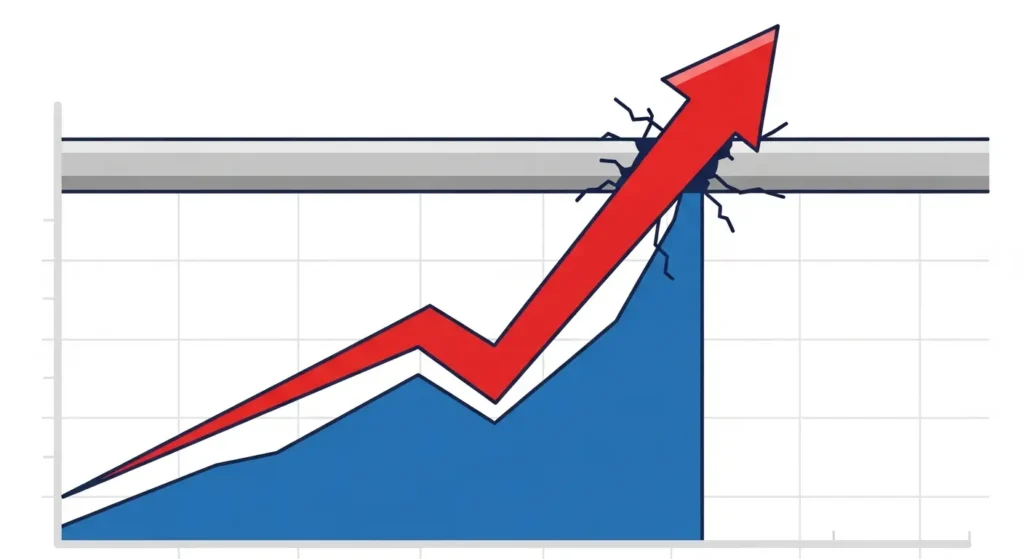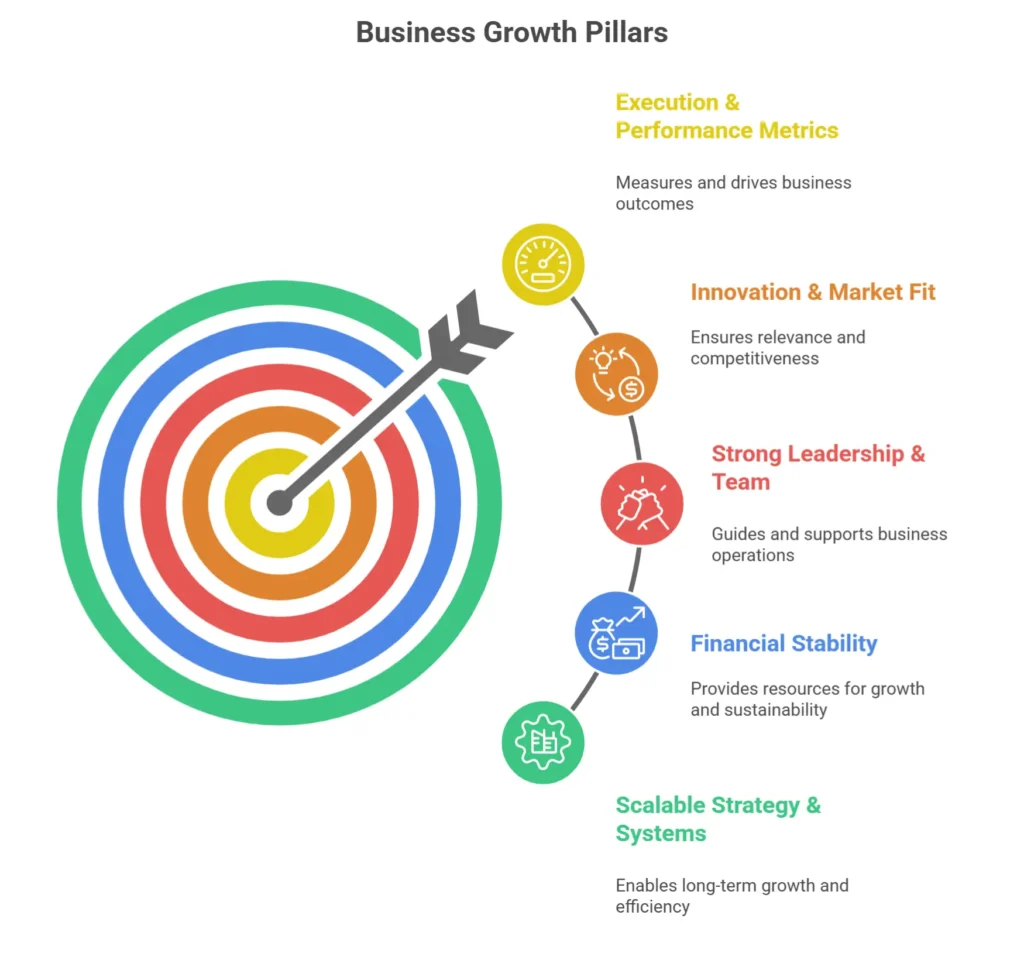Many small businesses thrive in their early stages but later hit a plateau. This slowdown often happens when owners fail to shift from startup hustle to scalable systems.
Key reasons include lack of strategy, poor cash flow management, overdependence on the founder, weak marketing adaptability, and resistance to innovation.
To achieve lasting growth, small businesses must evolve their structure, systems, and mindset, turning short-term wins into long-term stability.
In the beginning, small businesses often grow fast. The owner works tirelessly, customers respond positively, and profits start rolling in. But after that initial wave of success, growth suddenly slows or stops altogether.
Why does this happen?
Because what works during the startup phase doesn’t always work during the scaling phase. Early success depends on hustle, creativity, and direct customer connection, but sustainable growth requires systems, strategy, and structure.
This article explores why many small businesses fail to grow after initial success and what steps you can take to overcome this growth ceiling.
Key Takeaways
- Early success is a milestone, not the finish line.
- True growth demands a shift from “startup hustle” to “scale-ready business”
- Focus on strategy, financial health, systems, talent, and market dynamics.
- Recognising and addressing growth barriers early prevents stagnation.
Key Factors That Halt Growth (After Initial Success)
Many small businesses enjoy early wins but later hit a plateau. The main reason? They keep operating like startups instead of evolving into scalable organizations. Here are the key factors that often stall growth after initial success:
Strategic and Planning Weaknesses
Many founders lack a clear growth roadmap beyond the startup stage. They stay focused on daily operations instead of building scalable systems and long-term strategies. Without regular reviews, the business model becomes outdated as markets shift. To grow, leaders must step back from the day-to-day and focus on strategy, structure, and adaptability.
Financial & Cash-Flow Constraints

Growth requires steady working capital, yet many businesses underestimate how much funding scaling demands. As KIU and PNC Bank note, poor cash flow, even with strong revenue, often limits reinvestment. Expenses like hiring, marketing, or equipment rise before new revenue arrives. Smart forecasting and disciplined cash management are key to avoiding growth roadblocks.
Talent, Leadership, and Operational Capacity
Early-stage leadership often struggles to handle complexity as the business expands. Leaderonomics highlights that weak management skills, lack of delegation, and outdated systems can choke growth. Scaling requires stronger leadership, defined processes, and modern tools that improve efficiency and empower teams.
Market, Product, and Competitive Dynamics
A strong product-market fit early on doesn’t guarantee long-term success. Customer preferences, competitors, and technology evolve. According to Money254, failing to innovate or adapt quickly leads to stagnation. Continuous improvement, market awareness, and customer engagement are crucial to stay relevant.
Growth Execution Risks
Scaling too fast without infrastructure causes cash strain and quality issues. Hancock Whitney warns against expanding into new markets or products before readiness. Likewise, spreading efforts too thin dilutes focus. Sustainable growth means prioritizing the highest-impact initiatives and scaling gradually with stability in mind.
Recognizing the Growth Ceiling
Every successful small business eventually reaches a “growth ceiling,” the point where what once worked no longer drives progress. Recognizing this early is crucial to preventing stagnation
Common Indicators You’ve Hit a Plateau
- Revenue stagnates: Sales level off despite ongoing effort or marketing spend. You’re working just as hard, but growth has slowed or stopped.
- Owner overload: The founder or key leaders are deeply involved in daily operations rather than focusing on strategy or expansion. This signals a lack of delegation or scalable structure.
- System strain: Operational bottlenecks appear in delayed orders, inconsistent customer service, or overwhelmed teams. Existing systems can’t handle increased demand.
- Employee fatigue or turnover: Team morale dips as workloads grow without better processes or resources.
- Fewer new opportunities: Lead generation slows, and innovation feels stalled.

Strategies to Break Through the Growth Plateau
Breaking through a growth plateau requires more than working harder; it’s about working smarter, systemizing operations, and aligning every part of the business for scale. Below are five strategic pillars that help small businesses move beyond early success toward sustainable, long-term growth.

Develop Scalable Strategy & Systems
To grow past the initial stage, you need a clear, forward-looking roadmap, not just short-term goals.
- Create a 12–36 month growth plan outlining key milestones, target markets, and performance metrics.
- Document and systemize operations so growth isn’t dependent on the founder. Automate recurring tasks, delegate responsibilities, and create SOPs (standard operating procedures).
- Build a business that can run efficiently without constant owner supervision.
Secure Financial Stability for Scale
Sustainable growth demands strong financial foundations.
- Maintain a cash reserve or buffer to handle unexpected expenses and ensure operational continuity.
- Monitor cash flow closely; growth often requires upfront spending before returns appear.
- Plan reinvestments strategically, focusing on infrastructure, marketing, or technology that delivers measurable returns.
Strengthen Talent, Leadership & Processes
A growing business needs capable people and organized systems.
- Invest in leadership development and empower managers to make decisions independently.
- Improve workflow efficiency through automation and better communication tools.
- Build an organizational structure with clear accountability and performance tracking to reduce bottlenecks.
Reevaluate Product/Market Fit & Innovate
Markets evolve and so should your offerings.
- Reassess customer needs regularly through feedback, analytics, and trends.
- Innovate products or services to stay ahead of competitors and maintain relevance.
- Explore new distribution channels or adjacent markets that complement your existing strengths.
Execute with Focus & Metrics
Scaling successfully means doing less, but better.
- Prioritize 1–2 high-impact growth initiatives instead of spreading resources too thin.
- Use Key Performance Indicators (KPIs) like ROI, churn rate, and profit margin to measure outcomes.
- Review progress quarterly, refine your strategy, and double down on what drives results.
Pitfalls to Avoid When Scaling
Scaling a small business is exciting but it’s also where many owners make costly mistakes that stall growth or even reverse progress. Recognizing these pitfalls early helps you scale with stability, not chaos.
Relying Solely on Early Success
What worked during your startup phase won’t always work at scale. Early wins often come from hustle and flexibility, but long-term growth requires strategy, systems, and structure. Failing to evolve your approach leaves your business stuck in “startup mode,” unable to handle higher volume or complexity.
Ignoring Team Capacity & Infrastructure
Growth often outpaces your team’s ability to manage it. If you don’t expand staff, upgrade tools, or improve workflows, operations can collapse under pressure. Burnout, miscommunication, and quality issues quickly follow. Invest in people, technology, and processes that can support the next level of demand.
Expanding Too Quickly Without Measurement
Rapid expansion into new products, markets, or locations can drain cash flow and overwhelm resources. Without measurable data or a clear ROI framework, fast growth turns risky. Always scale based on performance metrics, not assumptions or excitement.
Neglecting Customer Experience While Chasing Growth
As your business grows, it’s easy to lose sight of customer satisfaction. But poor service or inconsistent quality can undo years of reputation-building. Maintain a customer-first mindset by monitoring feedback, tracking satisfaction scores, and ensuring personalized care even at scale.
Treating Reinvestment as Optional
Some business owners pause reinvestment after achieving success, focusing only on profit extraction. This short-sighted approach limits future opportunities. Reinvestment is not discretionary; it’s strategic. Continuously channel a portion of profits into innovation, training, marketing, and system upgrades to fuel sustained momentum.
Conclusion
Many small businesses stop growing because they keep operating with a startup mindset instead of evolving for scale. Early success relies on hustle, but lasting success demands structure, systems, and strategy.
To sustain growth, owners must delegate, systemize, and reinvest, building a business that runs smoothly without constant oversight. Recognizing plateaus early and adapting quickly prevents stagnation.
In the end, real growth isn’t just about expanding fast; it’s about building stability, leadership, and resilience that turn short-term wins into long-term success.
FAQs
Why did my business stop growing after a strong start?
Because the skills, systems and resources required for scale differ from those needed for start-up success.
Is growing too fast always bad?
Not always but scaling without infrastructure and processes often leads to crashing instead of growing.
How much working capital do I need to support growth?
When should I focus on leadership and systems rather than just sales?
When you notice bottlenecks, quality issues, or the business leans heavily on you rather than your team.
How can I stay adaptable in a changing market?
Regularly review customer feedback, monitor your sector, and ensure your business model allows pivots and innovation.





